Business Analysis of Oxford University Press: SWOT & Porter's Model
VerifiedAdded on 2022/12/26
|7
|1335
|63
Report
AI Summary
This report presents a business analysis of Oxford University Press (OUP), evaluating its internal and external environments. The analysis begins with an overview of OUP, highlighting its history and significance as the University of Oxford's press. A SWOT analysis is then conducted, identifying OUP's strengths (e.g., strong brand, diversified product range), weaknesses (e.g., reliance on dictionaries, premium pricing), opportunities (e.g., emerging markets, increased demand for educational materials), and threats (e.g., online retail, digital products). The report further applies Porter's Five Forces model to assess the competitive landscape, examining competitive rivalry, supplier power, buyer power, the threat of substitution, and the threat of new entry within the publishing industry. The analysis considers key competitors like Pearson PLC and Wiley & Sons, the limited power of suppliers, the high buyer power, the potential for substitution, and the barriers to new market entry. The report concludes that OUP maintains a strong market position despite facing intense competition.
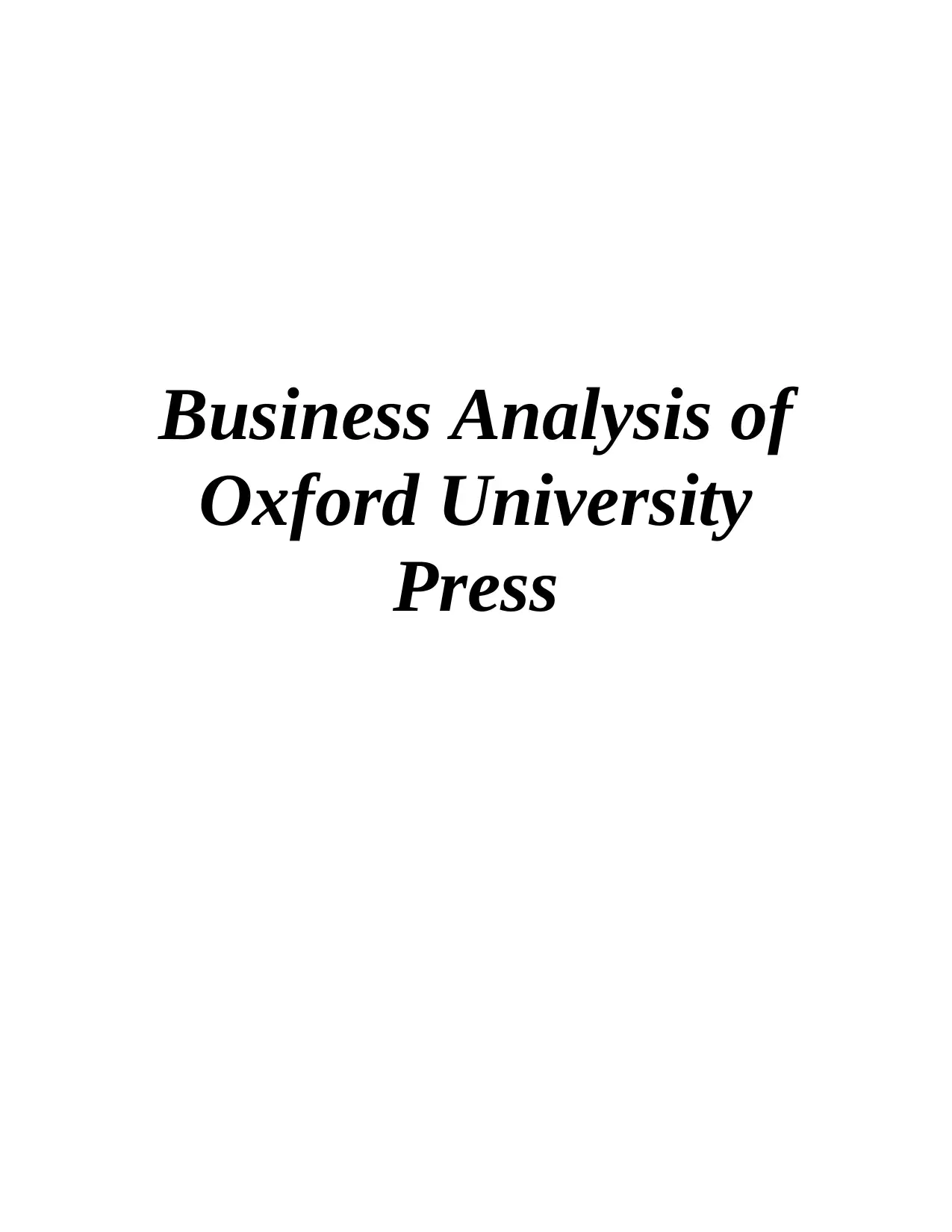
Business Analysis of
Oxford University
Press
Oxford University
Press
Paraphrase This Document
Need a fresh take? Get an instant paraphrase of this document with our AI Paraphraser
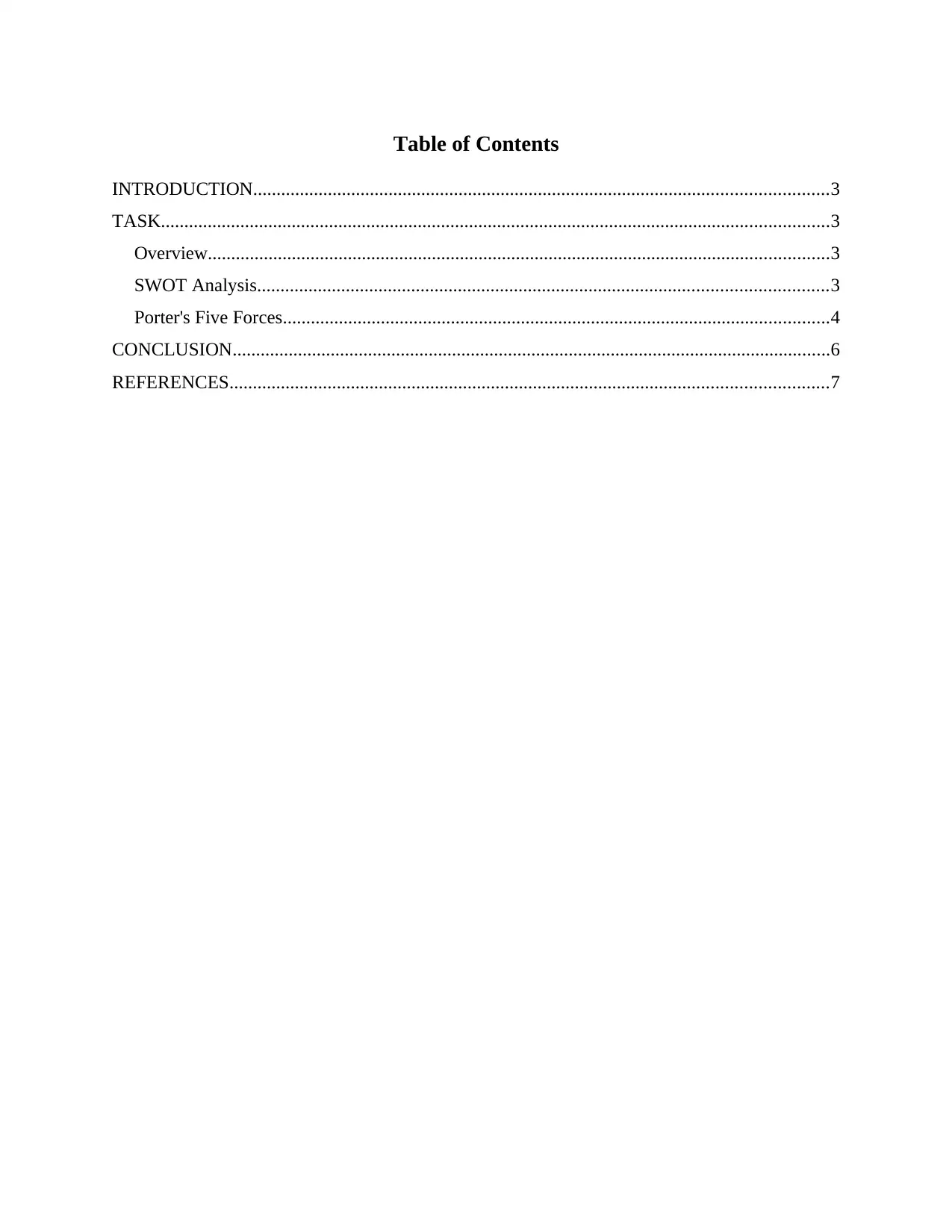
Table of Contents
INTRODUCTION...........................................................................................................................3
TASK...............................................................................................................................................3
Overview.....................................................................................................................................3
SWOT Analysis..........................................................................................................................3
Porter's Five Forces.....................................................................................................................4
CONCLUSION................................................................................................................................6
REFERENCES................................................................................................................................7
INTRODUCTION...........................................................................................................................3
TASK...............................................................................................................................................3
Overview.....................................................................................................................................3
SWOT Analysis..........................................................................................................................3
Porter's Five Forces.....................................................................................................................4
CONCLUSION................................................................................................................................6
REFERENCES................................................................................................................................7
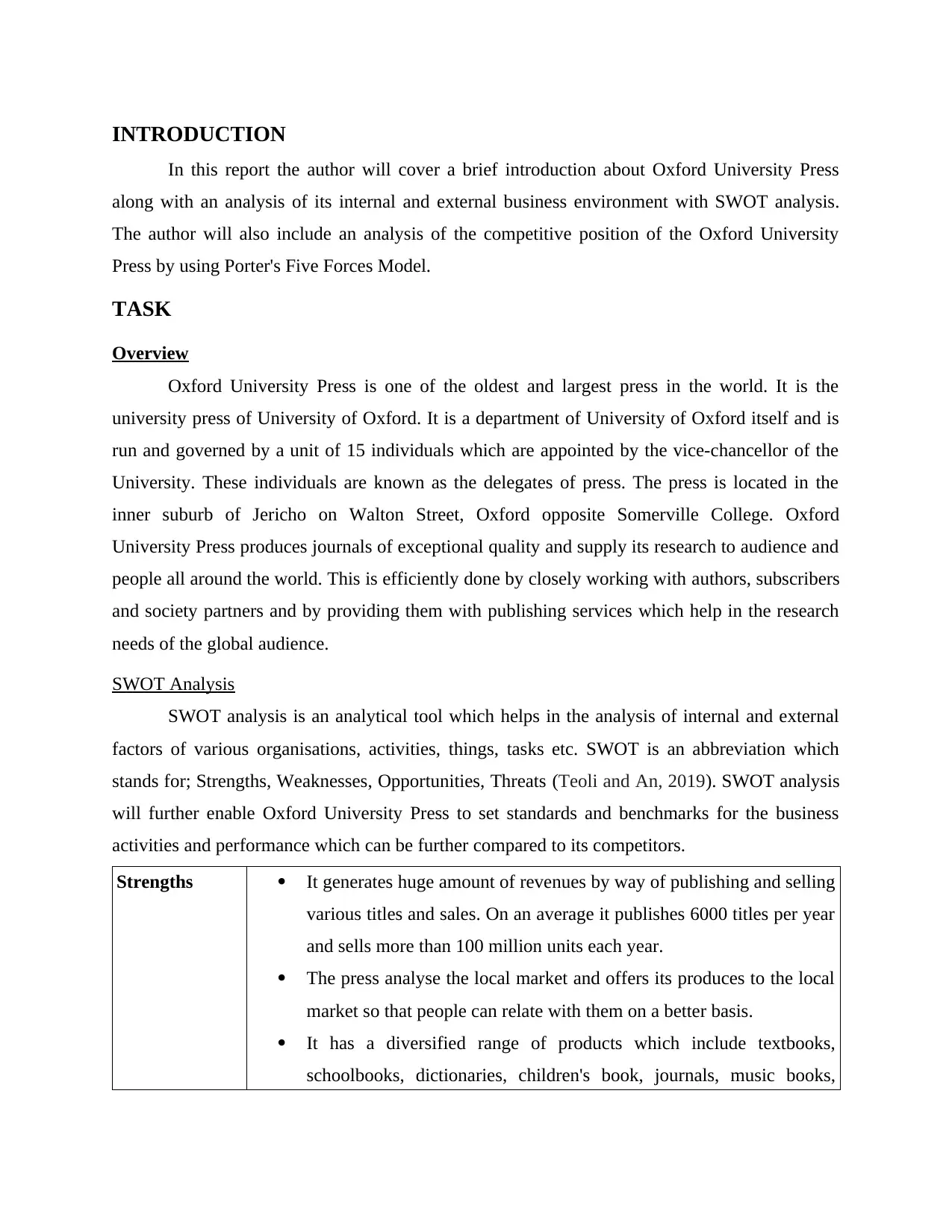
INTRODUCTION
In this report the author will cover a brief introduction about Oxford University Press
along with an analysis of its internal and external business environment with SWOT analysis.
The author will also include an analysis of the competitive position of the Oxford University
Press by using Porter's Five Forces Model.
TASK
Overview
Oxford University Press is one of the oldest and largest press in the world. It is the
university press of University of Oxford. It is a department of University of Oxford itself and is
run and governed by a unit of 15 individuals which are appointed by the vice-chancellor of the
University. These individuals are known as the delegates of press. The press is located in the
inner suburb of Jericho on Walton Street, Oxford opposite Somerville College. Oxford
University Press produces journals of exceptional quality and supply its research to audience and
people all around the world. This is efficiently done by closely working with authors, subscribers
and society partners and by providing them with publishing services which help in the research
needs of the global audience.
SWOT Analysis
SWOT analysis is an analytical tool which helps in the analysis of internal and external
factors of various organisations, activities, things, tasks etc. SWOT is an abbreviation which
stands for; Strengths, Weaknesses, Opportunities, Threats (Teoli and An, 2019). SWOT analysis
will further enable Oxford University Press to set standards and benchmarks for the business
activities and performance which can be further compared to its competitors.
Strengths It generates huge amount of revenues by way of publishing and selling
various titles and sales. On an average it publishes 6000 titles per year
and sells more than 100 million units each year.
The press analyse the local market and offers its produces to the local
market so that people can relate with them on a better basis.
It has a diversified range of products which include textbooks,
schoolbooks, dictionaries, children's book, journals, music books,
In this report the author will cover a brief introduction about Oxford University Press
along with an analysis of its internal and external business environment with SWOT analysis.
The author will also include an analysis of the competitive position of the Oxford University
Press by using Porter's Five Forces Model.
TASK
Overview
Oxford University Press is one of the oldest and largest press in the world. It is the
university press of University of Oxford. It is a department of University of Oxford itself and is
run and governed by a unit of 15 individuals which are appointed by the vice-chancellor of the
University. These individuals are known as the delegates of press. The press is located in the
inner suburb of Jericho on Walton Street, Oxford opposite Somerville College. Oxford
University Press produces journals of exceptional quality and supply its research to audience and
people all around the world. This is efficiently done by closely working with authors, subscribers
and society partners and by providing them with publishing services which help in the research
needs of the global audience.
SWOT Analysis
SWOT analysis is an analytical tool which helps in the analysis of internal and external
factors of various organisations, activities, things, tasks etc. SWOT is an abbreviation which
stands for; Strengths, Weaknesses, Opportunities, Threats (Teoli and An, 2019). SWOT analysis
will further enable Oxford University Press to set standards and benchmarks for the business
activities and performance which can be further compared to its competitors.
Strengths It generates huge amount of revenues by way of publishing and selling
various titles and sales. On an average it publishes 6000 titles per year
and sells more than 100 million units each year.
The press analyse the local market and offers its produces to the local
market so that people can relate with them on a better basis.
It has a diversified range of products which include textbooks,
schoolbooks, dictionaries, children's book, journals, music books,
⊘ This is a preview!⊘
Do you want full access?
Subscribe today to unlock all pages.

Trusted by 1+ million students worldwide
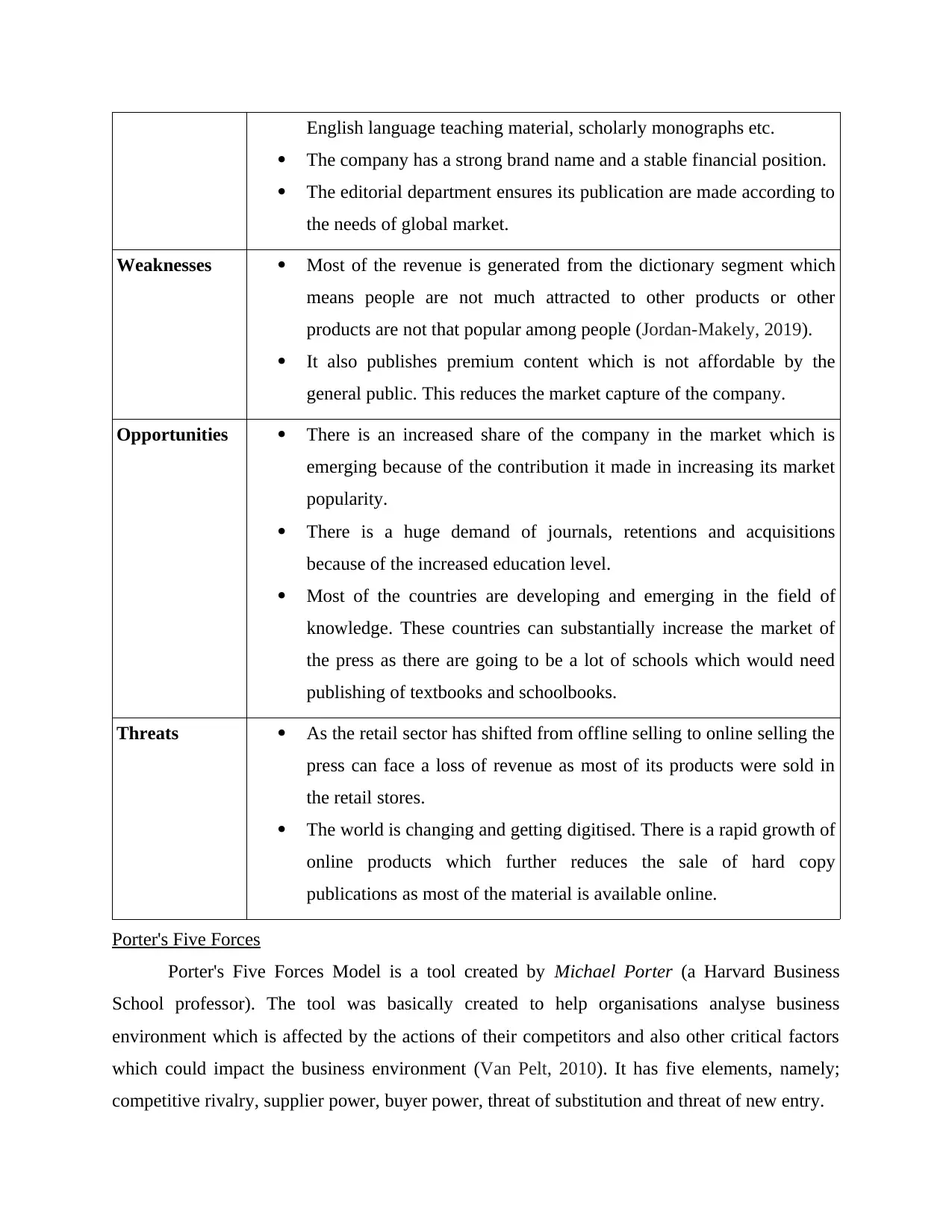
English language teaching material, scholarly monographs etc.
The company has a strong brand name and a stable financial position.
The editorial department ensures its publication are made according to
the needs of global market.
Weaknesses Most of the revenue is generated from the dictionary segment which
means people are not much attracted to other products or other
products are not that popular among people (Jordan-Makely, 2019).
It also publishes premium content which is not affordable by the
general public. This reduces the market capture of the company.
Opportunities There is an increased share of the company in the market which is
emerging because of the contribution it made in increasing its market
popularity.
There is a huge demand of journals, retentions and acquisitions
because of the increased education level.
Most of the countries are developing and emerging in the field of
knowledge. These countries can substantially increase the market of
the press as there are going to be a lot of schools which would need
publishing of textbooks and schoolbooks.
Threats As the retail sector has shifted from offline selling to online selling the
press can face a loss of revenue as most of its products were sold in
the retail stores.
The world is changing and getting digitised. There is a rapid growth of
online products which further reduces the sale of hard copy
publications as most of the material is available online.
Porter's Five Forces
Porter's Five Forces Model is a tool created by Michael Porter (a Harvard Business
School professor). The tool was basically created to help organisations analyse business
environment which is affected by the actions of their competitors and also other critical factors
which could impact the business environment (Van Pelt, 2010). It has five elements, namely;
competitive rivalry, supplier power, buyer power, threat of substitution and threat of new entry.
The company has a strong brand name and a stable financial position.
The editorial department ensures its publication are made according to
the needs of global market.
Weaknesses Most of the revenue is generated from the dictionary segment which
means people are not much attracted to other products or other
products are not that popular among people (Jordan-Makely, 2019).
It also publishes premium content which is not affordable by the
general public. This reduces the market capture of the company.
Opportunities There is an increased share of the company in the market which is
emerging because of the contribution it made in increasing its market
popularity.
There is a huge demand of journals, retentions and acquisitions
because of the increased education level.
Most of the countries are developing and emerging in the field of
knowledge. These countries can substantially increase the market of
the press as there are going to be a lot of schools which would need
publishing of textbooks and schoolbooks.
Threats As the retail sector has shifted from offline selling to online selling the
press can face a loss of revenue as most of its products were sold in
the retail stores.
The world is changing and getting digitised. There is a rapid growth of
online products which further reduces the sale of hard copy
publications as most of the material is available online.
Porter's Five Forces
Porter's Five Forces Model is a tool created by Michael Porter (a Harvard Business
School professor). The tool was basically created to help organisations analyse business
environment which is affected by the actions of their competitors and also other critical factors
which could impact the business environment (Van Pelt, 2010). It has five elements, namely;
competitive rivalry, supplier power, buyer power, threat of substitution and threat of new entry.
Paraphrase This Document
Need a fresh take? Get an instant paraphrase of this document with our AI Paraphraser
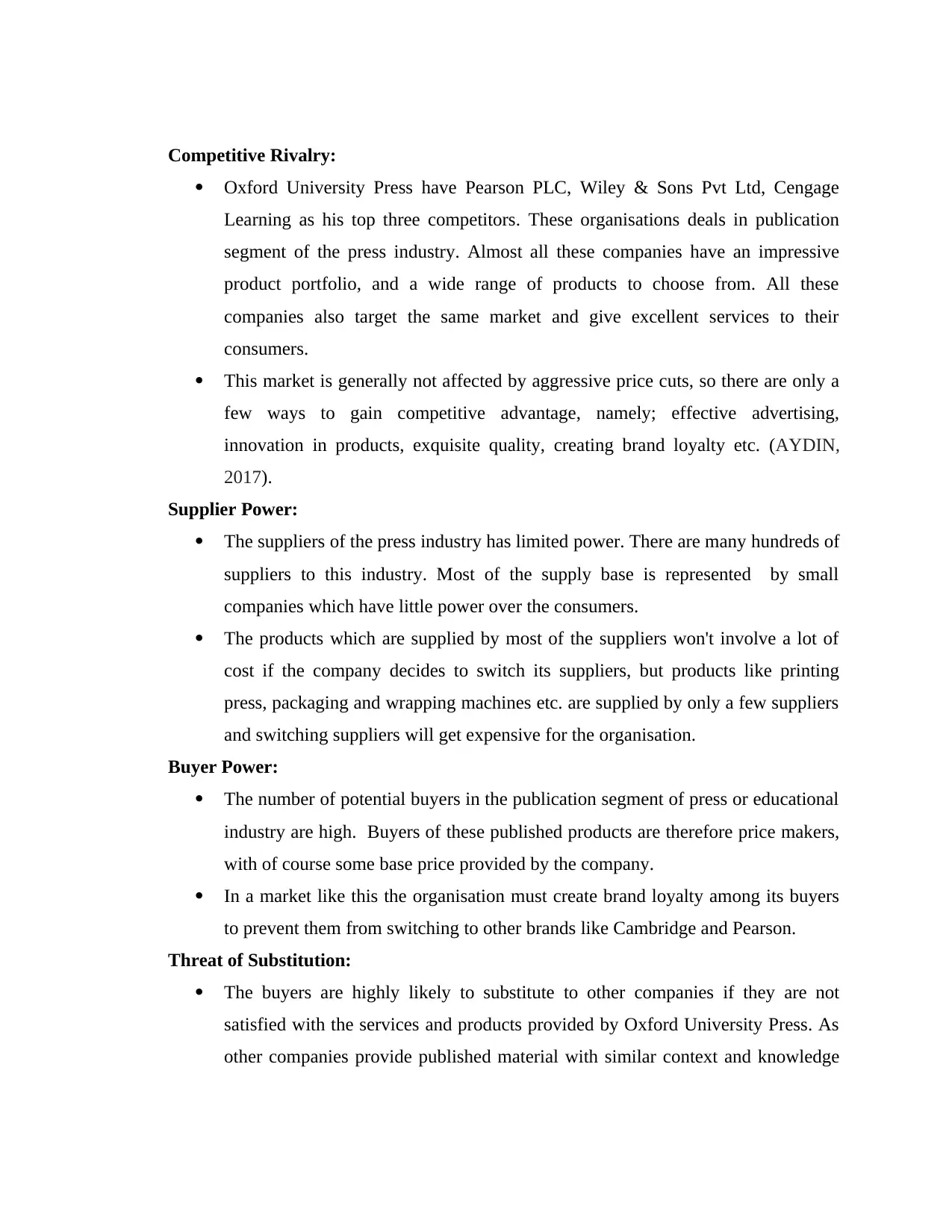
Competitive Rivalry:
Oxford University Press have Pearson PLC, Wiley & Sons Pvt Ltd, Cengage
Learning as his top three competitors. These organisations deals in publication
segment of the press industry. Almost all these companies have an impressive
product portfolio, and a wide range of products to choose from. All these
companies also target the same market and give excellent services to their
consumers.
This market is generally not affected by aggressive price cuts, so there are only a
few ways to gain competitive advantage, namely; effective advertising,
innovation in products, exquisite quality, creating brand loyalty etc. (AYDIN,
2017).
Supplier Power:
The suppliers of the press industry has limited power. There are many hundreds of
suppliers to this industry. Most of the supply base is represented by small
companies which have little power over the consumers.
The products which are supplied by most of the suppliers won't involve a lot of
cost if the company decides to switch its suppliers, but products like printing
press, packaging and wrapping machines etc. are supplied by only a few suppliers
and switching suppliers will get expensive for the organisation.
Buyer Power:
The number of potential buyers in the publication segment of press or educational
industry are high. Buyers of these published products are therefore price makers,
with of course some base price provided by the company.
In a market like this the organisation must create brand loyalty among its buyers
to prevent them from switching to other brands like Cambridge and Pearson.
Threat of Substitution:
The buyers are highly likely to substitute to other companies if they are not
satisfied with the services and products provided by Oxford University Press. As
other companies provide published material with similar context and knowledge
Oxford University Press have Pearson PLC, Wiley & Sons Pvt Ltd, Cengage
Learning as his top three competitors. These organisations deals in publication
segment of the press industry. Almost all these companies have an impressive
product portfolio, and a wide range of products to choose from. All these
companies also target the same market and give excellent services to their
consumers.
This market is generally not affected by aggressive price cuts, so there are only a
few ways to gain competitive advantage, namely; effective advertising,
innovation in products, exquisite quality, creating brand loyalty etc. (AYDIN,
2017).
Supplier Power:
The suppliers of the press industry has limited power. There are many hundreds of
suppliers to this industry. Most of the supply base is represented by small
companies which have little power over the consumers.
The products which are supplied by most of the suppliers won't involve a lot of
cost if the company decides to switch its suppliers, but products like printing
press, packaging and wrapping machines etc. are supplied by only a few suppliers
and switching suppliers will get expensive for the organisation.
Buyer Power:
The number of potential buyers in the publication segment of press or educational
industry are high. Buyers of these published products are therefore price makers,
with of course some base price provided by the company.
In a market like this the organisation must create brand loyalty among its buyers
to prevent them from switching to other brands like Cambridge and Pearson.
Threat of Substitution:
The buyers are highly likely to substitute to other companies if they are not
satisfied with the services and products provided by Oxford University Press. As
other companies provide published material with similar context and knowledge
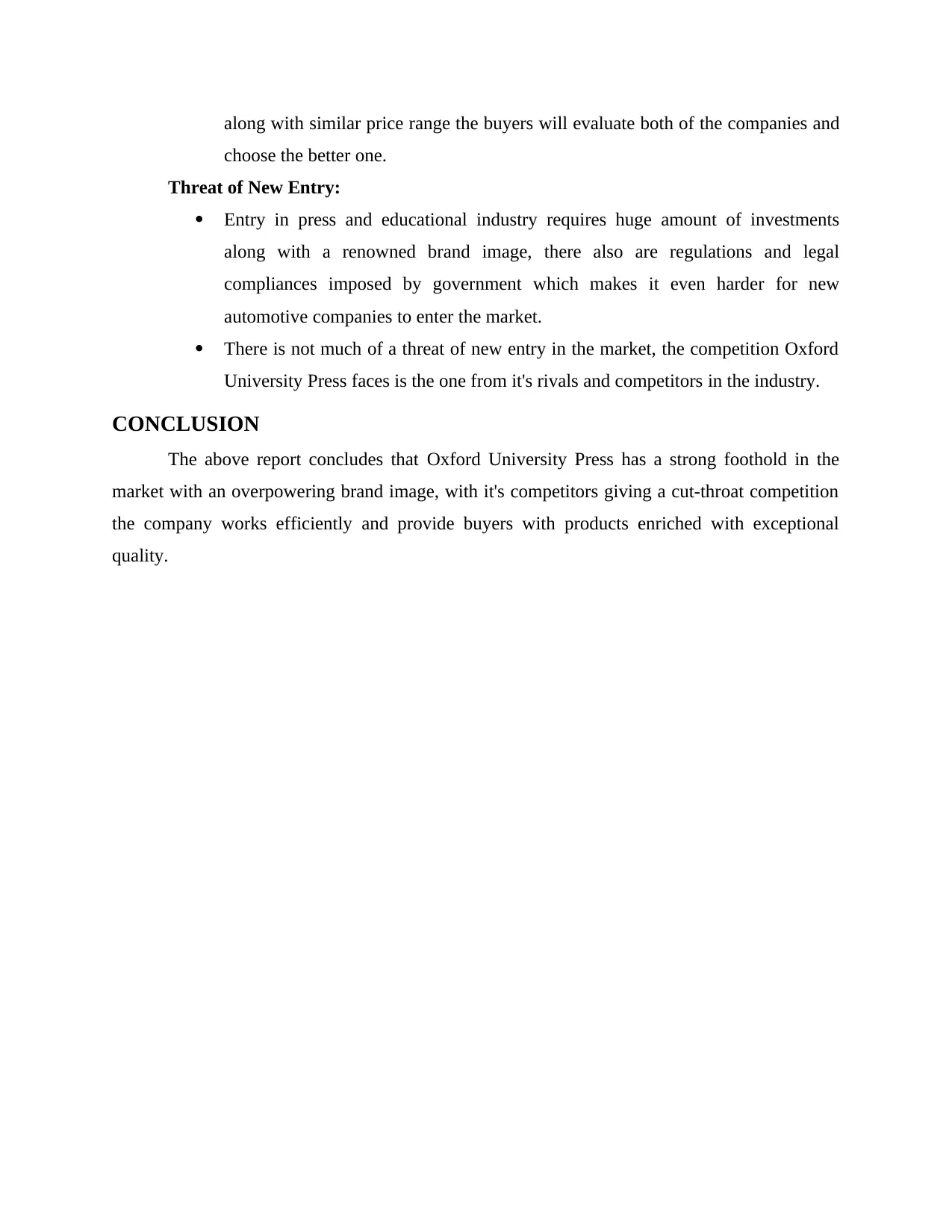
along with similar price range the buyers will evaluate both of the companies and
choose the better one.
Threat of New Entry:
Entry in press and educational industry requires huge amount of investments
along with a renowned brand image, there also are regulations and legal
compliances imposed by government which makes it even harder for new
automotive companies to enter the market.
There is not much of a threat of new entry in the market, the competition Oxford
University Press faces is the one from it's rivals and competitors in the industry.
CONCLUSION
The above report concludes that Oxford University Press has a strong foothold in the
market with an overpowering brand image, with it's competitors giving a cut-throat competition
the company works efficiently and provide buyers with products enriched with exceptional
quality.
choose the better one.
Threat of New Entry:
Entry in press and educational industry requires huge amount of investments
along with a renowned brand image, there also are regulations and legal
compliances imposed by government which makes it even harder for new
automotive companies to enter the market.
There is not much of a threat of new entry in the market, the competition Oxford
University Press faces is the one from it's rivals and competitors in the industry.
CONCLUSION
The above report concludes that Oxford University Press has a strong foothold in the
market with an overpowering brand image, with it's competitors giving a cut-throat competition
the company works efficiently and provide buyers with products enriched with exceptional
quality.
⊘ This is a preview!⊘
Do you want full access?
Subscribe today to unlock all pages.

Trusted by 1+ million students worldwide
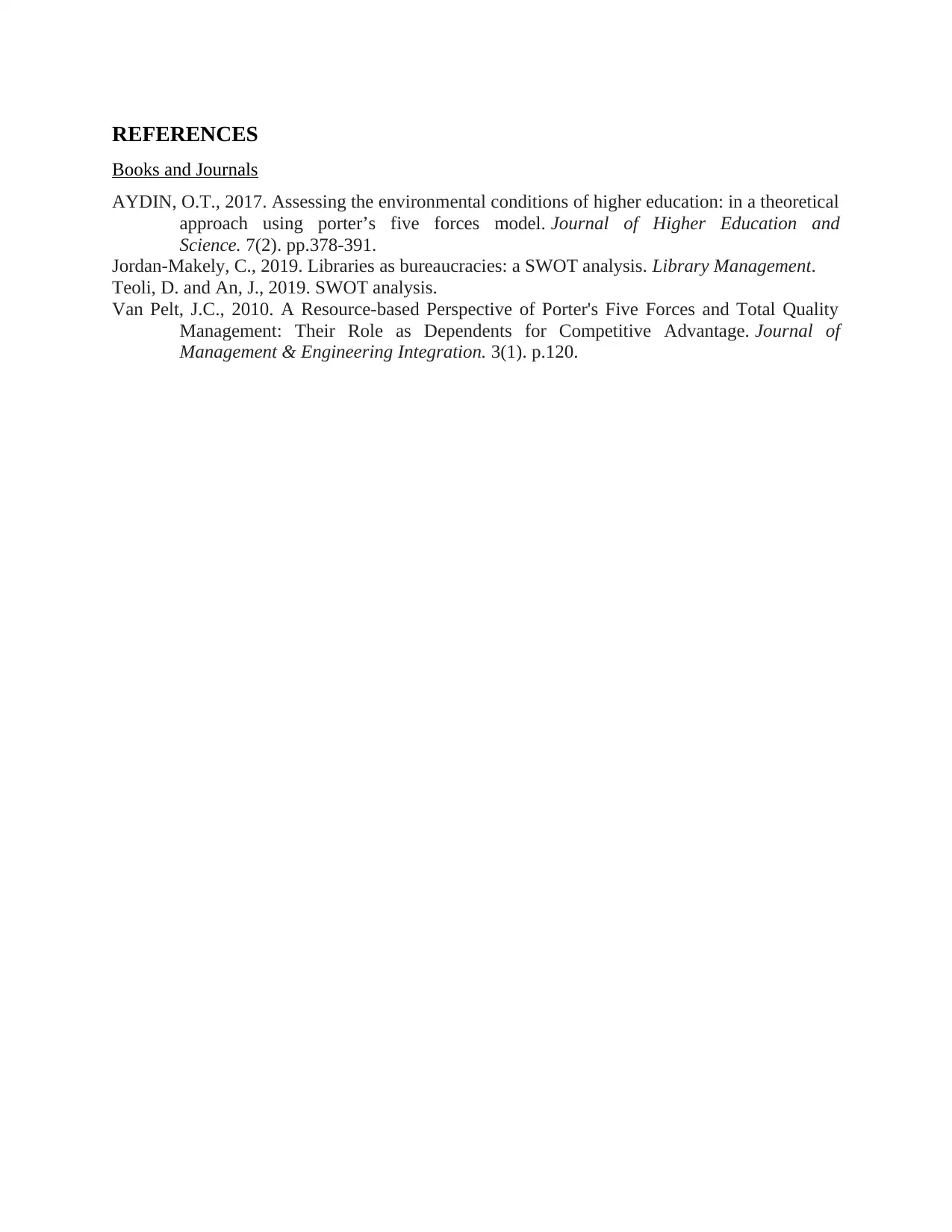
REFERENCES
Books and Journals
AYDIN, O.T., 2017. Assessing the environmental conditions of higher education: in a theoretical
approach using porter’s five forces model. Journal of Higher Education and
Science. 7(2). pp.378-391.
Jordan-Makely, C., 2019. Libraries as bureaucracies: a SWOT analysis. Library Management.
Teoli, D. and An, J., 2019. SWOT analysis.
Van Pelt, J.C., 2010. A Resource-based Perspective of Porter's Five Forces and Total Quality
Management: Their Role as Dependents for Competitive Advantage. Journal of
Management & Engineering Integration. 3(1). p.120.
Books and Journals
AYDIN, O.T., 2017. Assessing the environmental conditions of higher education: in a theoretical
approach using porter’s five forces model. Journal of Higher Education and
Science. 7(2). pp.378-391.
Jordan-Makely, C., 2019. Libraries as bureaucracies: a SWOT analysis. Library Management.
Teoli, D. and An, J., 2019. SWOT analysis.
Van Pelt, J.C., 2010. A Resource-based Perspective of Porter's Five Forces and Total Quality
Management: Their Role as Dependents for Competitive Advantage. Journal of
Management & Engineering Integration. 3(1). p.120.
1 out of 7
Related Documents
Your All-in-One AI-Powered Toolkit for Academic Success.
+13062052269
info@desklib.com
Available 24*7 on WhatsApp / Email
![[object Object]](/_next/static/media/star-bottom.7253800d.svg)
Unlock your academic potential
Copyright © 2020–2025 A2Z Services. All Rights Reserved. Developed and managed by ZUCOL.




